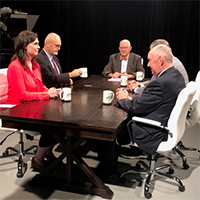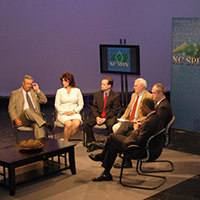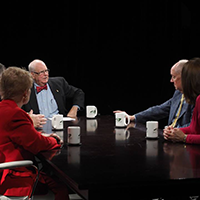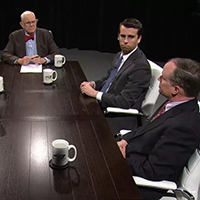Who controls the Federal Reserve?
Published 11:55 a.m. yesterday
One of my favorite topics, both when I was teaching at NCSU and now as I continue to speak to various groups, is the Federal Reserve. To me, the Federal Reserve -usually simply called the “Fed” – is interesting because it has the power to significantly influence the economy, yet many people are unaware of its powers and who controls that power.
The question of who controls the Fed is an important issue of discussion today. President Trump is not happy with the Fed’s recent actions on interest rates, and consequently he has talked about replacing the current chairperson of the Fed, Jerome Powell. Chairperson Powell has responded by asserting the President cannot replace him with a new Chairperson before his term has concluded if their disagreement is simply over policy.
Who is correct in this dispute and why does it matter? In today’s column I’ll present the facts and let you decide.
But first, a review of the role and importance of the Fed is useful background for understanding today’s dispute. The Fed can be viewed as the nation’s central bank. In this role, the Fed has regulatory controls over banks, it controls the supply of our common currency, the dollar, and it implements monetary policy. Monetary policy means the Fed uses its control of the money supply to influence interest rates, which in turn influences how fast or slow the economy grows.
The last five years provide a textbook example of the Fed using monetary policy to change the economy. During the economic uncertainty of the Covid years, including 2020 and 2021, the Fed pumped significantly more cash into the economy and caused interest rates to fall. The Fed’s goal was to motivate more borrowing and spending to help the economy recover from the Covid recession.
However, with the benefit of hindsight, in 2022 the Fed realized it had overdone the spending stimulation when inflation began to surge. Hence, with the Covid crisis appearing to be under control, the Fed reversed course and pushed for higher interest rates to slow the pace of price increases. Interest rates rose to levels above the pre-Covid years, consumer spending slowed, and the annual inflation rate dropped from over 9% to near 2.5%.
Now there is a debate about how the Fed should move next, and this debate is at the core of the dispute between President Trump and Fed Chairperson Powell. President Trump wants the Fed to use its powers to lower interest rates more. Chairperson Powell and other members of the Fed’s governing board have expressed concern that the President’s tariff policies could result in higher domestic prices and hence a higher inflation rate. They worry further lowering of interest rates would stimulate more consumer spending which would push inflation even higher. Hence, it now looks unlikely the Fed will move to reduce interest rates at its next policy meeting in early May.
Disagreements over Fed policy are not unusual. Today there are different economists who think the Fed should lower interest rates, raise interest rates, or leave rates stable. Of course, the differences in opinion between the President and the Fed Chairperson are more notable because each has some power to back-up their opinion. The question today is how much power?
While Chairperson Powell is the “face” of the Fed, the Chair shares power with the other six members of the Fed’s Board of Governors. At meetings to determine monetary policy, the Chair has one vote, just like the other Board members. The Chairperson serves a four year term, while the other Board members have staggered 14-year term. All are appointed by the President – but not necessarily the same President – and confirmed by the Senate. Chairperson Powell was first appointed by President Trump during the first Trump term, and then was reappointed by President Biden. Chairperson Powell’s current term ends in May 2026.
The Federal Reserve’s charter states a Fed Board member, including the Chairperson, can be removed prior to their term’s expiration for “cause.” “Cause” has traditionally been interpreted as removal for serious misconduct or abuse of power, and not for policy disagreements. Indeed, a Supreme Court ruling affirmed this interpretation in 1935.
The creators of the Federal Reserve in the early 20th century wanted the agency to be independent. This means restricting the President and the Congress from interfering in the Fed’s actions. Many interpret this objective as an intent to keep politics out of the Fed’s decision-making, thereby allowing the Fed to focus solely on economic goals like keeping both unemployment and inflation at relatively low levels.
Of course, whenever vague wording like “for cause” is used, the table is set for different interpretations and potential court cases. If President Trump “fires” Chairperson Powell, one potential outcome is the Chairperson then files a lawsuit that likely works its way up to the Supreme Court. The stock market would likely respond by falling, as uncertainty in economic policy would be a consequence until the courts provide a final verdict.
Hence, while each of us can decide who should control the Federal Reserve, the final answer would likely come from the courts.
Walden is a Reynolds Distinguished Professor Emeritus at North Carolina State University.







